Complete Solutions to Application Of First Law Of Thermodynamics In Different Situations of chapter KINETIC THEORY OF GASES AND THERMODYNAMICS of Class 11 book with complete answers and questions
| Class 11 | PHYSICS |
| Chapter | KINETIC THEORY OF GASES AND THERMODYNAMICS |
| A2Z | Application Of First Law Of Thermodynamics In Different Situations |
| Number Of Questions | 25 |
| Academic Year | 2023-24 |
A fixed mass of a gas is adiabatically made to expand to double its volume and then isochorically heated to bring the gas to the original pressure. The ratio of final to initial temperature will be
01:45View SolutionThe molar heat capacity of a gas in a process
01:31View SolutionWhen `1` mole of a monatomic gas is mixed with `3` moles of a diatomic gas, the value of adiabatic exponent `gamma` for the mixture is
03:15View SolutionA tyre pumped to a pressure `3.375 atm "at" 27^(@)C` suddenly bursts. What is the final temperature `(gamma = 1.5)`?
04:33View SolutionIn the following pressure-volume diagram, the isochoric, isothermal and isobaric parts, respectively, are
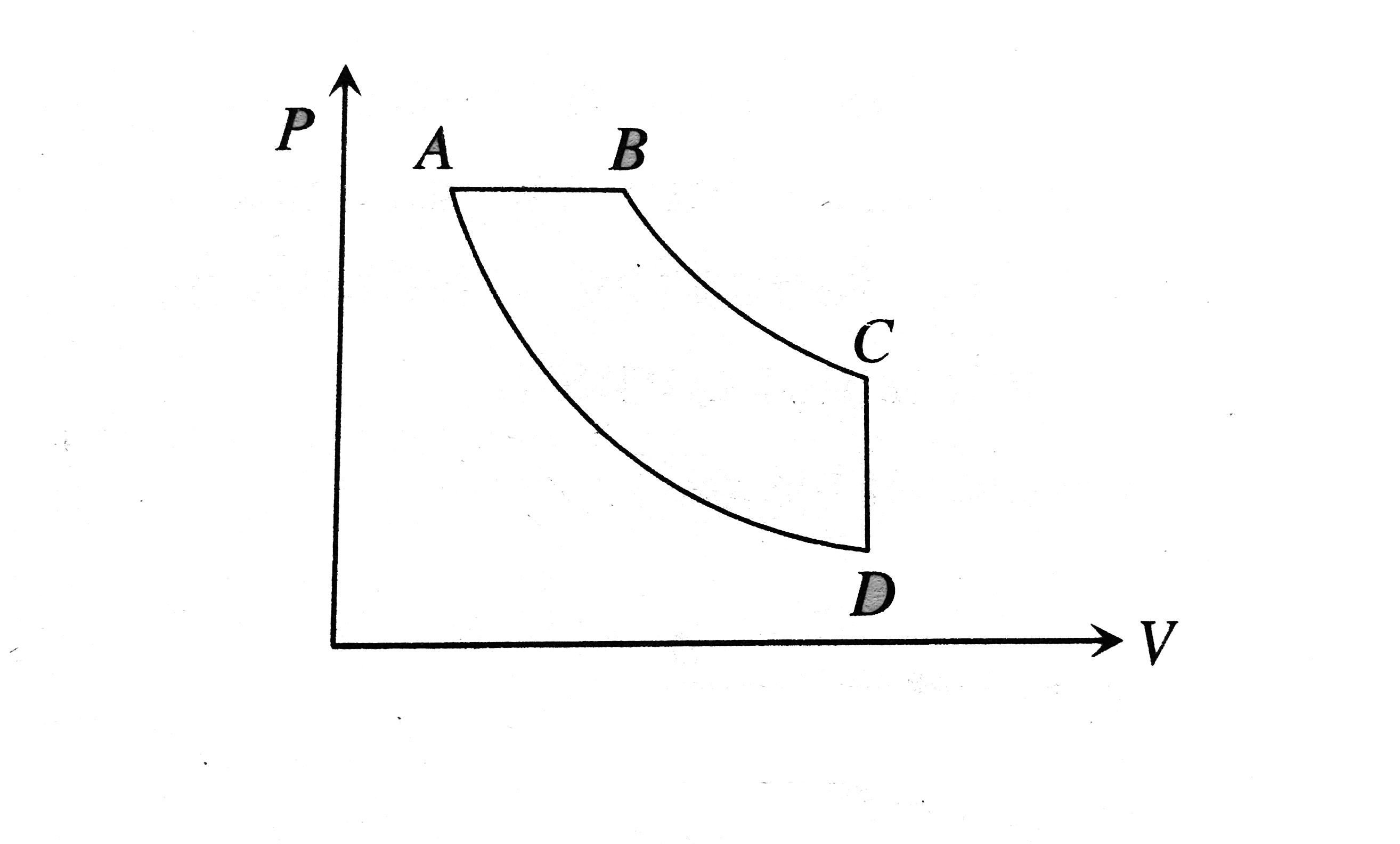 01:02View Solution
01:02View SolutionFor one complete cycle of a thermodynamic process gas as shown in the P-V diagram, which of following correct?
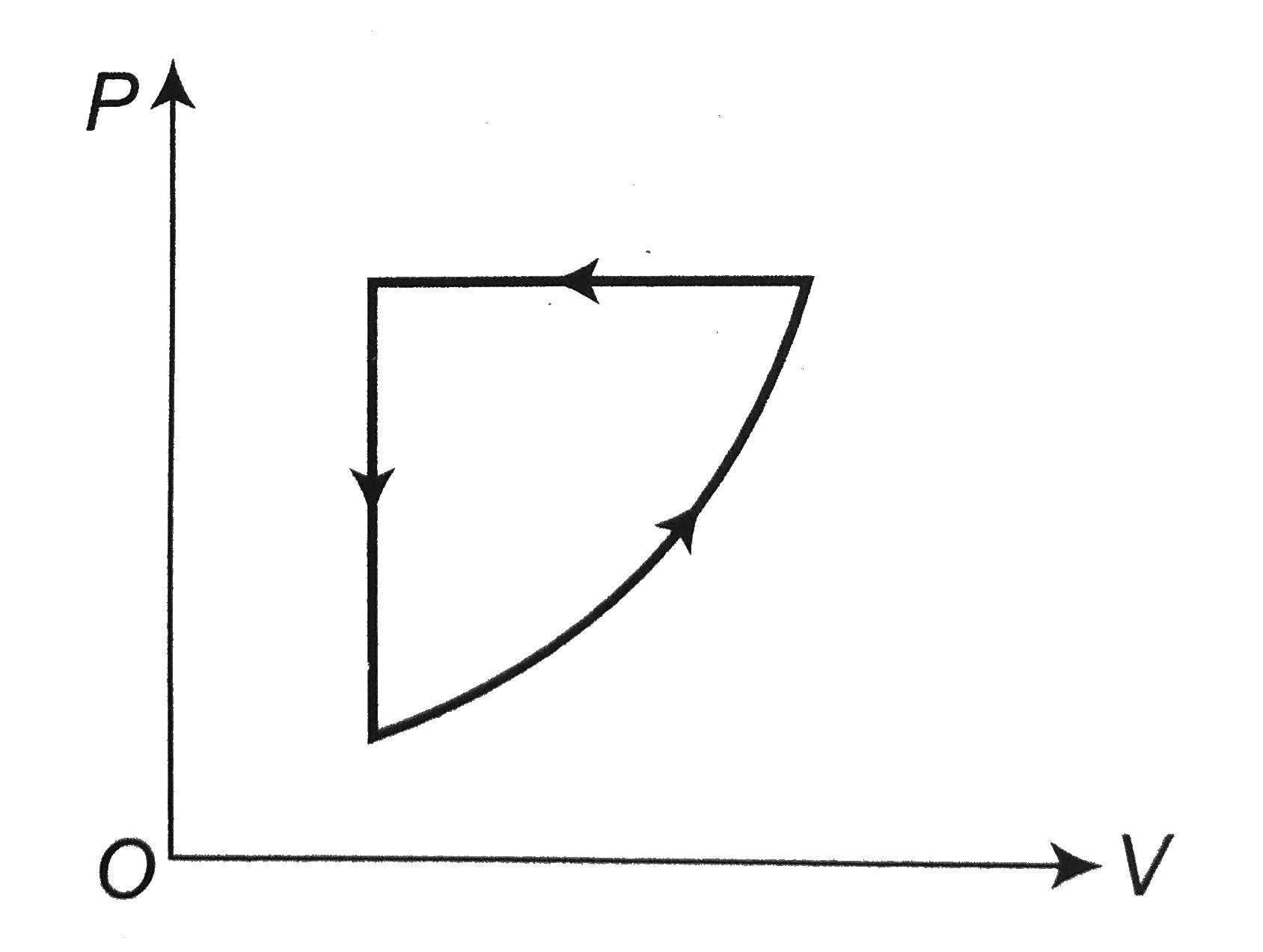 01:21View Solution
01:21View SolutionA sample of an ideal gas is taken through the cyclic process `abca` . It absorbs `50 J` of heat during the part `ab`, no heat during `bc` and rejects `70 J` of heat during `ca`. `40 J` of work is done on the gas during the part `bc`.
(a) Find the internal energy of the gas at `b` and `c` if it is `1500 J` at `a`.
(b) Calculate the work done by the gas during the part `ca`.
 05:11View Solution
05:11View SolutionA thermodynamic process of one mole ideal monoatomic gas is shown in figure. The efficiency of cyclic process `ABCA` will be
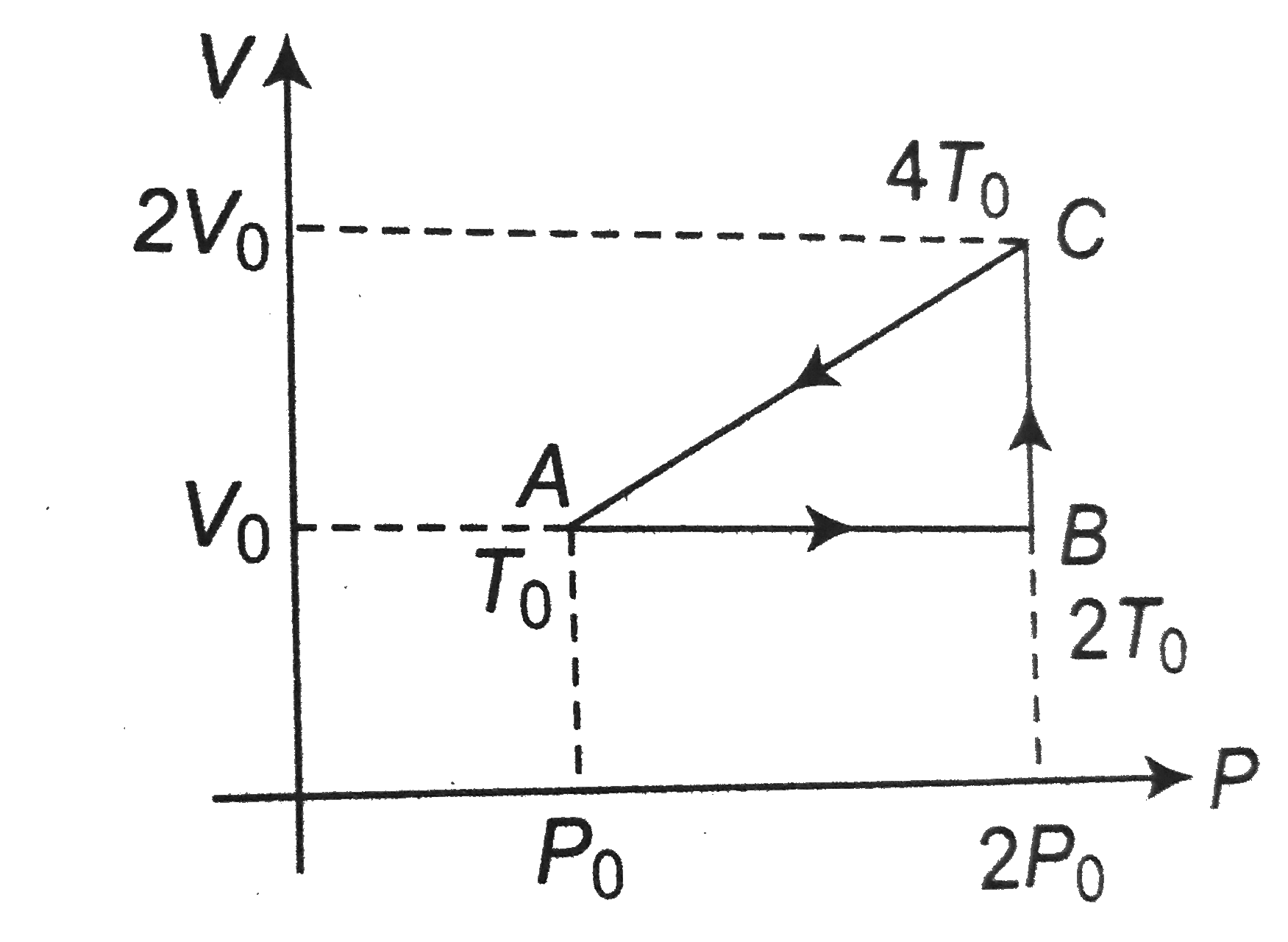 06:37View Solution
06:37View SolutionA gas is expanded form volume `V_(0) to 2V_(0)` under three different processes as shown in the figure . Process 1 is isobaric process process 2 is isothermal and and process 3 is adiabatic .
Let `DeltaU_(1),DeltaU_(2) and DeltaU_(3)` be the change in internal energy of the gs in these three processes then
 04:52View Solution
04:52View SolutionDuring adiabatic process pressure P versus density `roh` equation is
02:05View SolutionP-V diagram of a diatomic gas is a straight line passing through origin. The molar heat capacity of the gas in the process will be
02:08View SolutionAn ideal gas is taken from state `1` to state `2` through optional path `A, B, C and D` as shown in the `PV` diagram. Let `Q, W and U` represent the heat supplied, work done and change in internal energy of the gas respectively.
Then,
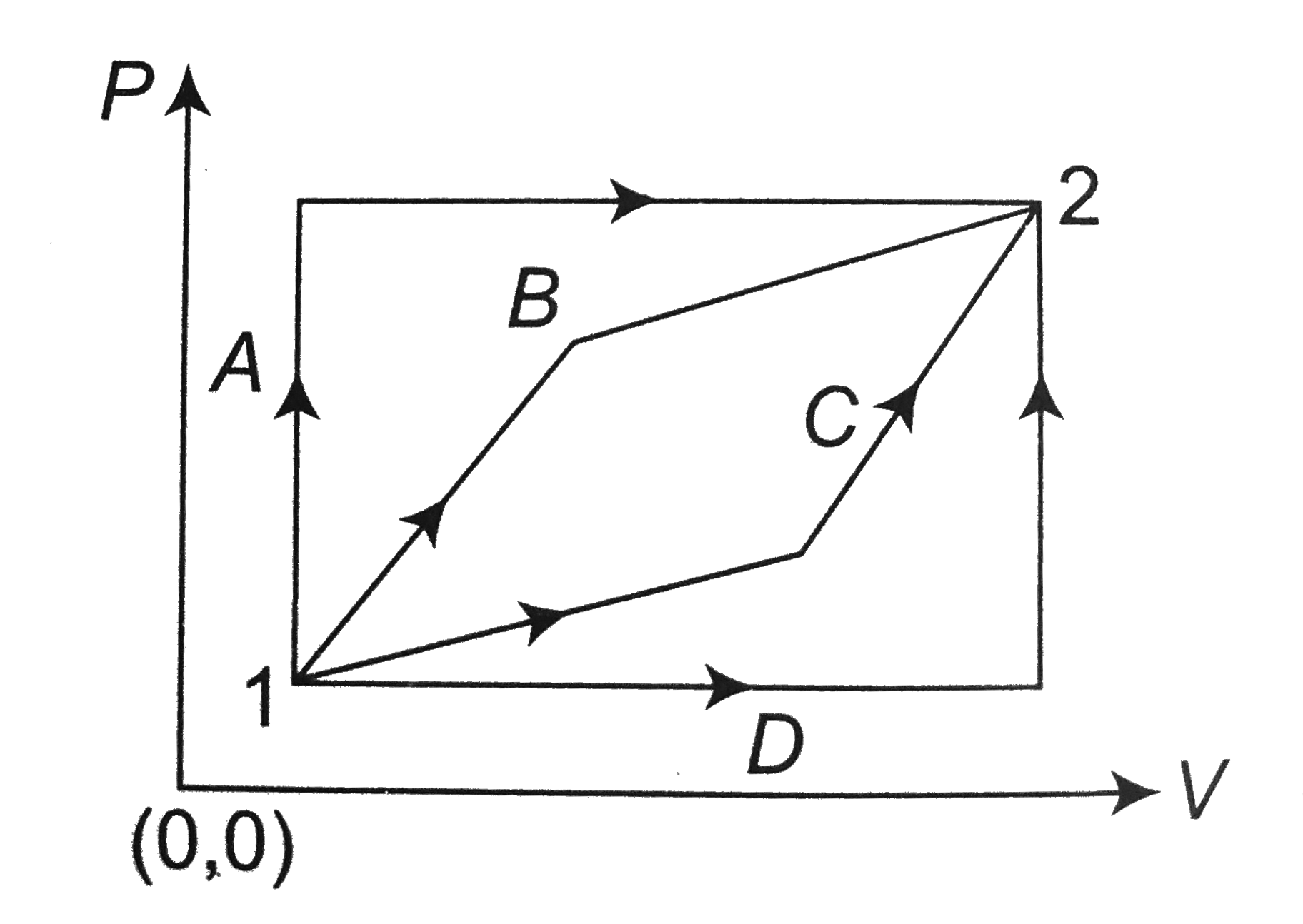 03:01View Solution
03:01View SolutionIn the following P-V diagram two adiabatics cut two isothermals at temperature `T_(1) and T_(2)` (fig). The value of `V_(a)/V_(d)` will be
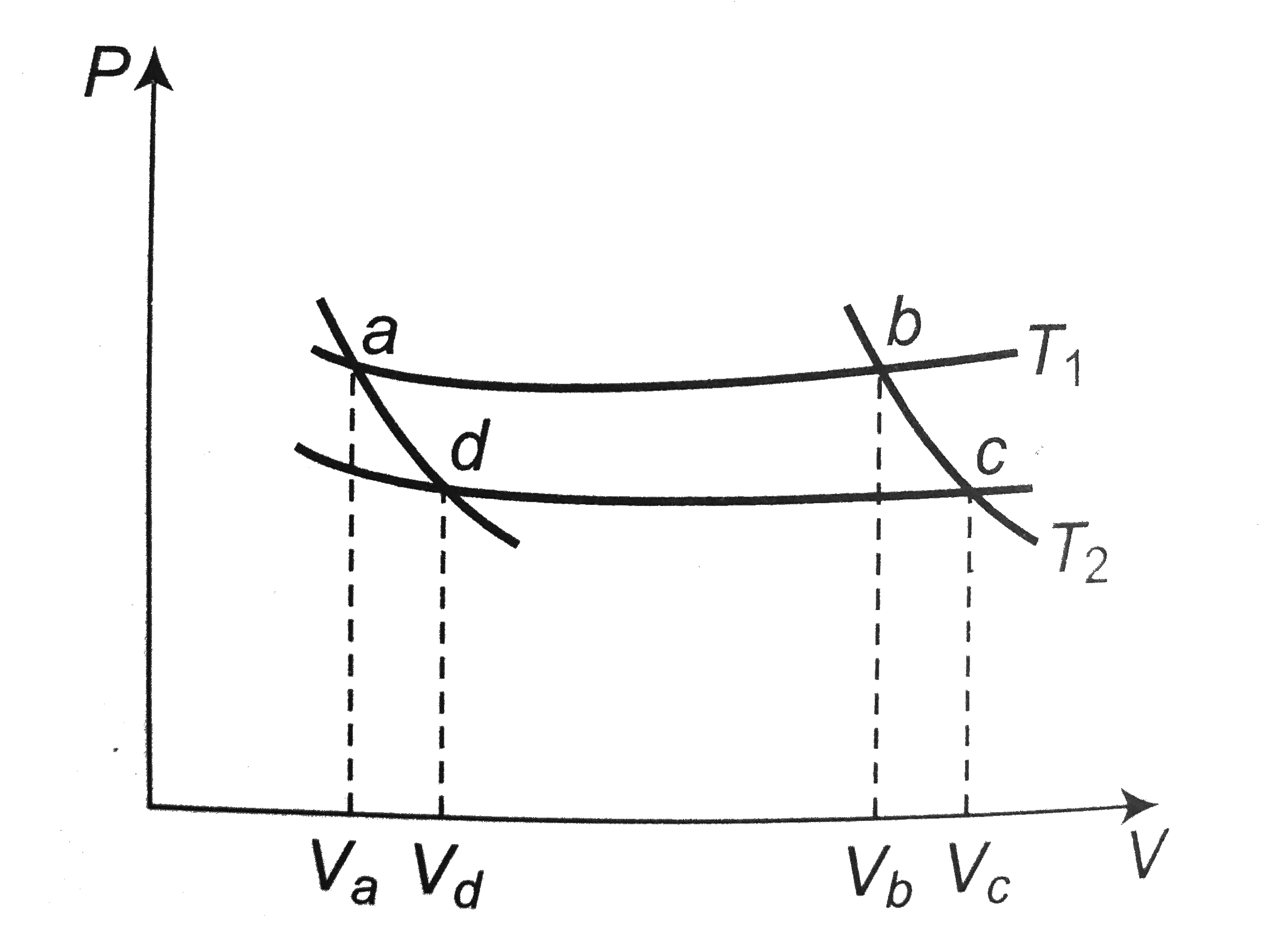 07:07View Solution
07:07View SolutionIn an adiabatic process, `R = (2)/(3) C_(v)`. The pressure of the gas will be proportional to:
03:06View SolutionInitial volume of three samples of same gas `A, B and C` are same. The process A is adiabatic, B is isobaric and C is isothermal. Each of the sample has same final pressure and volume. The initial pressure of which sample was maximum.
04:36View SolutionOne mole of an ideal gas at temperature `T_` expands slowly according to the law `p/V=` constant.
Its final temperature is `T_2`. The work done by the gas is02:31View SolutionIf the ratio of specific heat of a gas of constant pressure to that at constant volume is `gamma`, the change in internal energy of the mass of gas, when the volume changes from `V` to `2V` at constant pressure `p` is
01:16View SolutionA polytropic process for an ideal gas is represented by equation `PV^(n) = constant`. If g is ratio of specific heats `((C_(p))/(C_(v)))`, then value of n for which molar heat capacity of the process is negative is given as
05:44View SolutionDuring an experiment, an ideal gas is found to obey an additional law `VP^2=constant,` The gas is initially at a temperature T, and volume V. When it expands to a volume `2V,` the temperature becomes…….
01:59View SolutionFind the amount of work done to increase the temperature of one mole of an ideal gas by `30^(@)C`, if it is expanding under condition `VooT^(2//3)`.
04:31View SolutionTwo moles of an ideal mono-atomic gas undergo a cyclic process as shown in the figure. The temperatures in different states are given as `6T_(1) = 3T_(2) = 2T_(4) = T_(3) = 1800 K`. Determine the work done by the gas during the cycle.
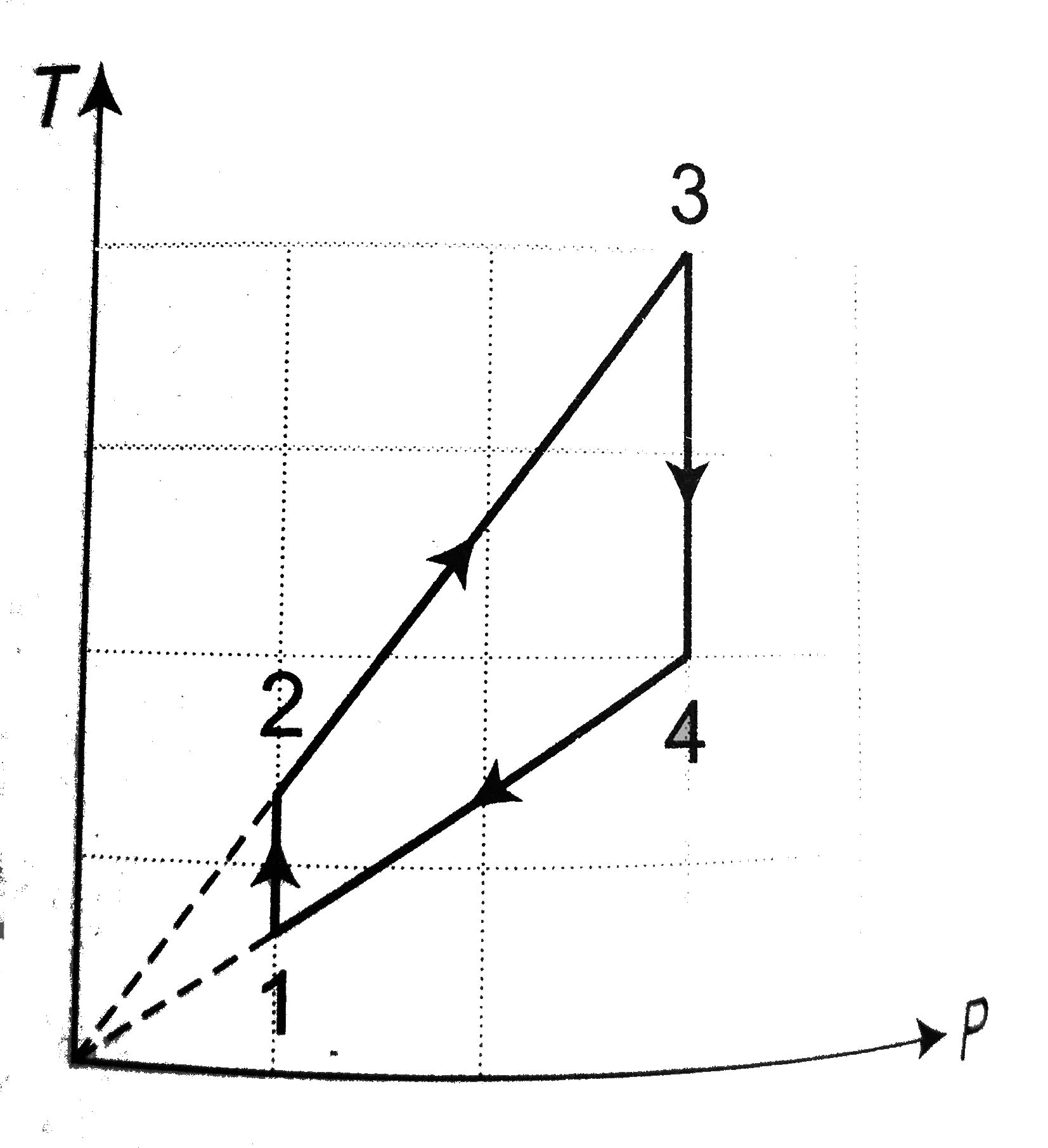 04:02View Solution
04:02View SolutionA sample of an ideal gas initially having internal energy `U_(1)` is allowed to expand adiabatically performing work W. Heat Q is then supplied to it, keeping the volume constant at its new value, until the pressure raised to its original value. The internal energy is then `U_(3)` (see figure). find the increase in internal energy `(U_(3) - U_(1))`?
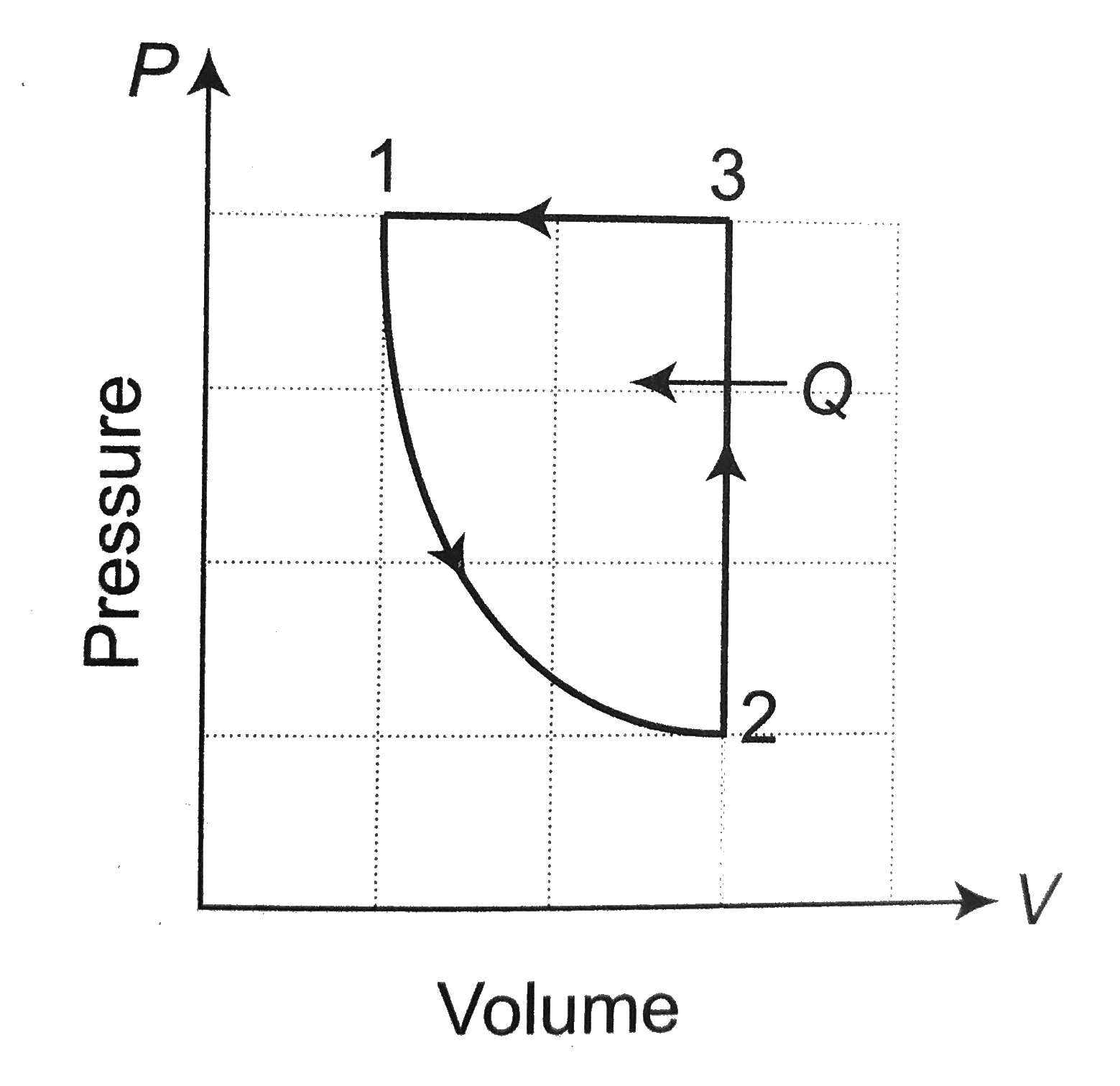 03:33View Solution
03:33View SolutionAn amount `Q` of heat is added to a monoatomic ideal gas in a process in which the gas performs work `Q/2` on its surrounding. Find the molar heat capacity for the process.
03:46View SolutionIn a process, the molar heat capacity of a diatomic gas is `(10)/(3) R`. When heat Q is supplied to the gas, find the work done by the gas
04:13View SolutionP-V graph for an ideal gas undergoing polytropic process `PV^(m) = constant` is shown here. Find the value of m.
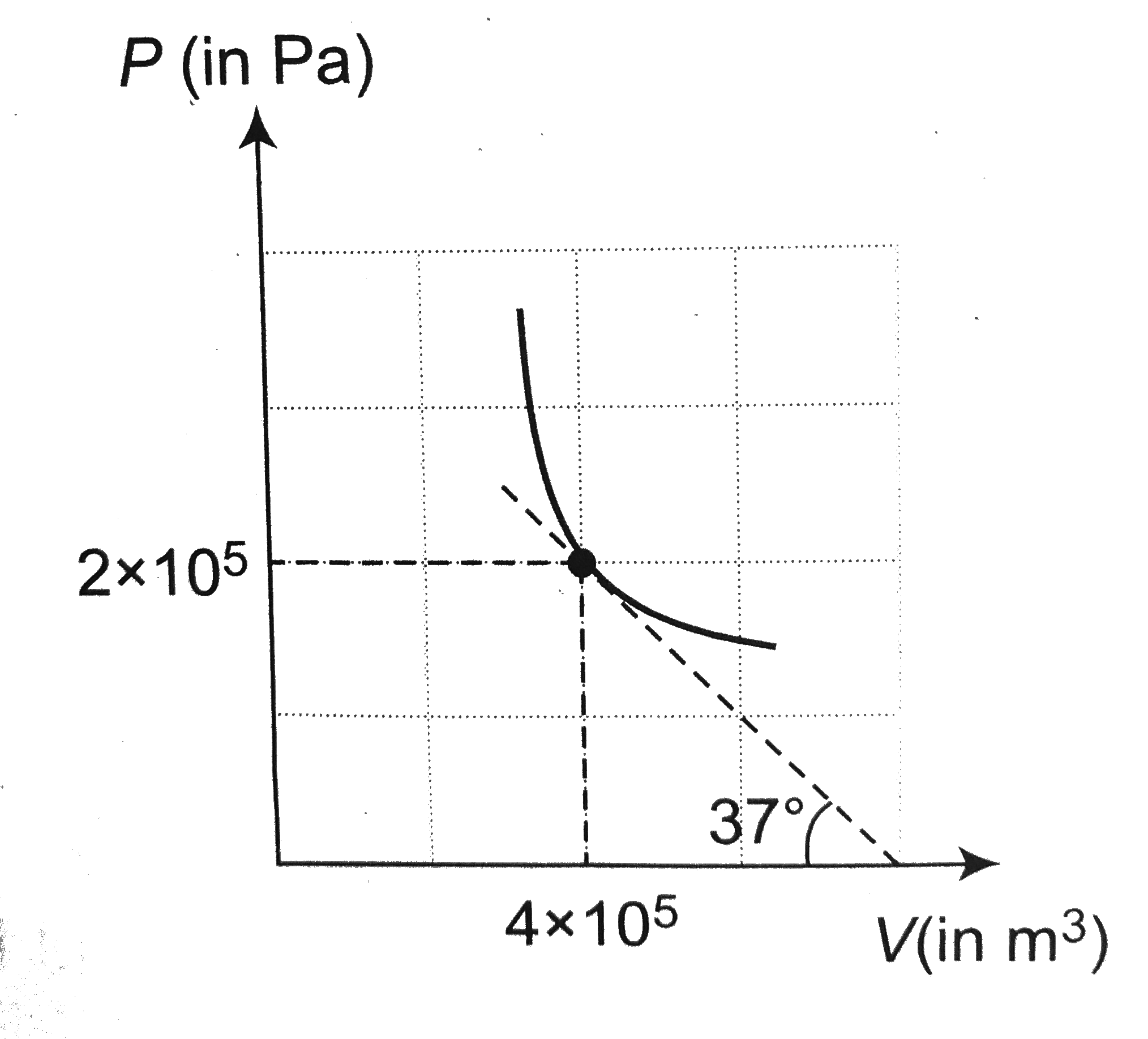 03:02View Solution
03:02View Solution
Application Of First Law Of Thermodynamics In Different Situations questions and complete solutions for chapter KINETIC THEORY OF GASES AND THERMODYNAMICS of A2Z PHYSICS (HINGLISH) of Class 11
